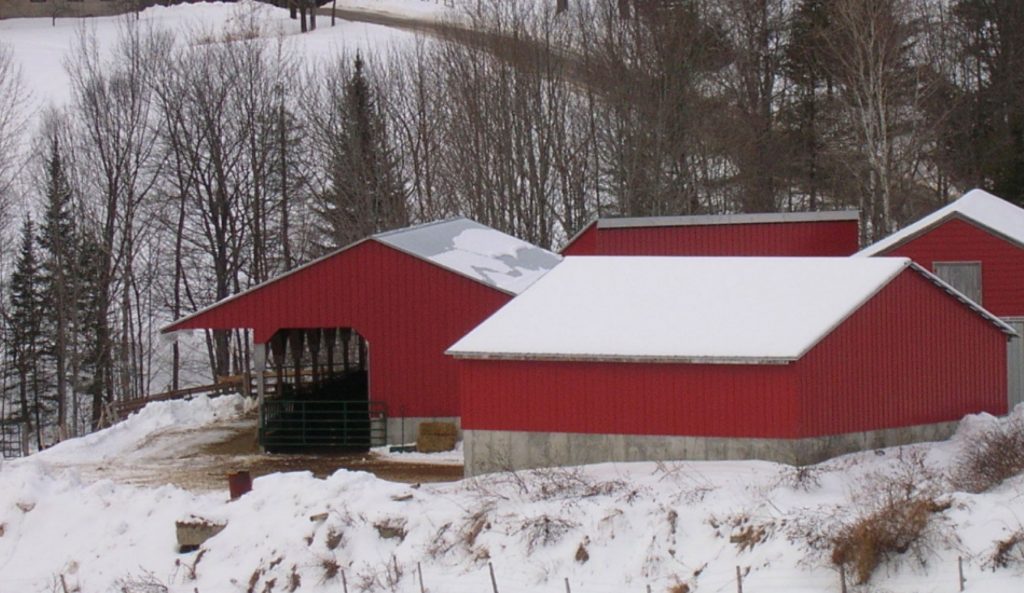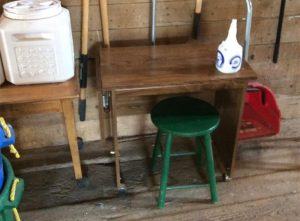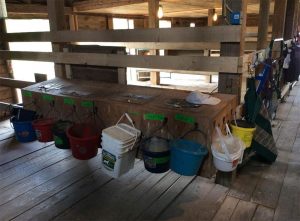Work Smarter and Safer on the Farm with Universal Design Principles
By Ellen S. Gibson
How old are you? Okay, let’s just say you’re not as young as you used to be.
Is farming physically harder on your body than it used to be? Yes? No?
If yes, what physical issues do you struggle with?
What would you say if I told you that there’s probably an easier way to do the things that you find to be most difficult?
Read on…
What is Universal Design?
Universal design (UD) is a set of principles to use when you think about how you work around the farm. Is the workflow efficient? Does the setup of your barn allow room for error without accidental or unintended consequences? Can you think of ways to reduce the amount of physical effort it takes to complete a task? If you were injured, would you still be able to complete your barn routines?
Read on…
How can Universal Design be applied on your farm?
Think of using Universal Design principles to
- Keep everyone safe—you, your children, workers, visitors
- Streamline work, increase efficiency
- Reduce wear and tear on the body
- Create an environment where everyone from young children to aging adults can be included—in the barn, workshop, garden, or kitchen
Universal Design principles include flexibility, tolerance for error, efficiency, low physical effort, and safety. Incorporating these principles takes foresight and planning.
What are the Universal Design principles?
There are seven of them, as follows:
Equitable Use
This is using design to be inclusive for a wide developmental span, whether young children or their great grandparents, visitors to the farm, relief workers, or a disabled family member.
For example, design gardens that are accessible to everyone by considering:
- Slope of paths: no more than one-inch rise per horizontal foot.
- Substrate on the surface of the path. Grass? Crushed gravel? Pavement?
- Width of paths. Are they wide enough to accommodate a wheeled garden cart?
- Height of garden beds. If they are 35 inches or higher, tending the garden can be done from a standing position.
Flexibility in use
These are spaces that can be used by many different people, of all ages and abilities. They make it easier for people with temporary injuries to be able to do their work. For example:
- Adjustable shelving with heavy items on the lower shelves, frequently used items between knee and chest level
- Places to sit and work in the barn
- Sets of frequently used tools available in more than one place (redundancy)
- Flexibility in use: seating for rest or as a workspace.
- Simple and intuitive: color-coding provides visual cues to minimize mistakes.
Simple and intuitive use
Examples:
- Tools organized and hanging on the wall
- Color-coded labels show where to return tools
- On/off switches easy to read in contrasting colors
Perceptible information
In other words, I shouldn’t have to use a flashlight or a magnifying glass to see the temperature setting on an electric space heater! Examples:
- Numbers on dials are high contrast colors that can be seen easily
- Use of LED task lighting
- Digital thermometers instead of analog
- Does your tractor take diesel or regular gas? A color-coded gas cap on your tractor reduces the chances of a costly mistake
Tolerance for error
Through design, reduce potential for injuries due to unintended consequences, and make your farm safer for people with cognitive or mobility challenges. For example, eliminate stairs and steps by keeping everything on one level. If that is not possible, reduce the chances of falling or tripping by stair design:
- 7” minimum rise, 11” tread with closed risers
- Handrails placed on both sides of the stairs for balance and stability. Handrails go all the way from the top to the lowest step
- Stairwell is lighted, with a light switch at both the top and the bottom of the stairs
- Stairs are kept clear and free of clutter
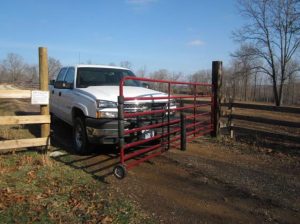
Low physical effort
Or, work smarter, not harder.
Examples
- Gates that open automatically, eliminating the need to get out of a vehicle or dismount from a tractor
- Smooth floors and clearance to allow use of rolling carts
- An additional step on your tractor to make climbing aboard easier
- Stall door latches that close behind you
Approach and use to accommodate all sizes and shapes
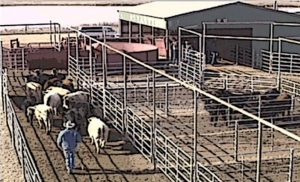
Example: A system to move and handle livestock, keeping the animals calm and their humans safe.
Universal Design principles can guide changes large and small. Small changes, such as installing self-closing latches on stall doors, can provide a big impact for the time and expense involved. Larger issues, such as redesigning the workflow in your barn to eliminate having to go in among your animals to feed them, aren’t necessarily expensive but will require more planning.
Conclusion
No matter how strong and able-bodied you may be right now, physical needs change over time. We all pass through developmental stages as we grow older. Designing places that can accommodate us throughout our lives—no matter what our physical and mental challenges are—is good design. The goal is to make our farms safer, more efficient, and better able to accommodate all who will be passing through our barn doors.
For more information check out the Universal Design on the Farm page.

